Airbrush Types
There are various types of airbrushes on the market, each with advantages and disadvantages.
Internal versus External Mix - As the name implies, in external mix airbrushes, the air and paint are mixed outside the main body of the airbrush. An example would be the classic Paasche Model H . This uses a very simple design concept, and is easy to use and to clean. The internal mix airbrushes (combined with double action, see below) take more effort to master but offer more control over the paint process.
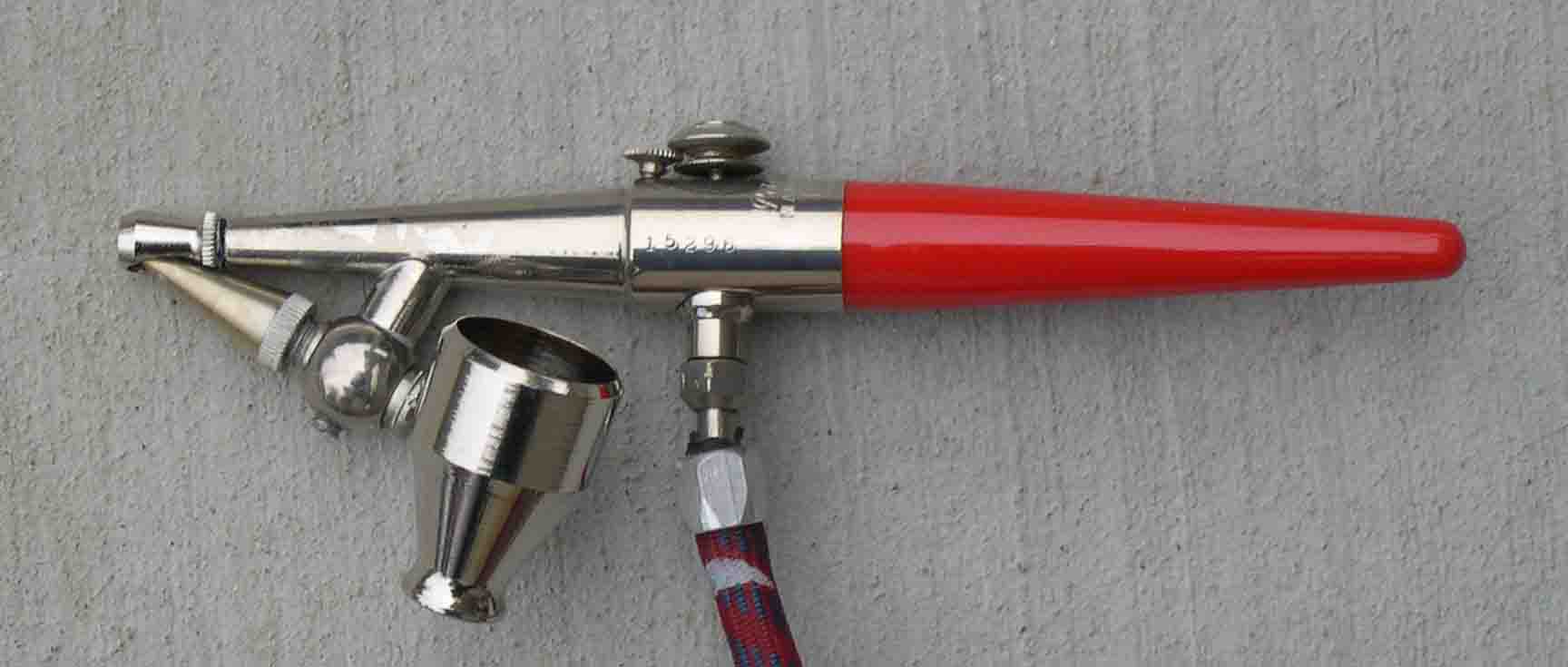
A single action, external mix, siphon (bottom) feed airbrush, the Paasche Model H .
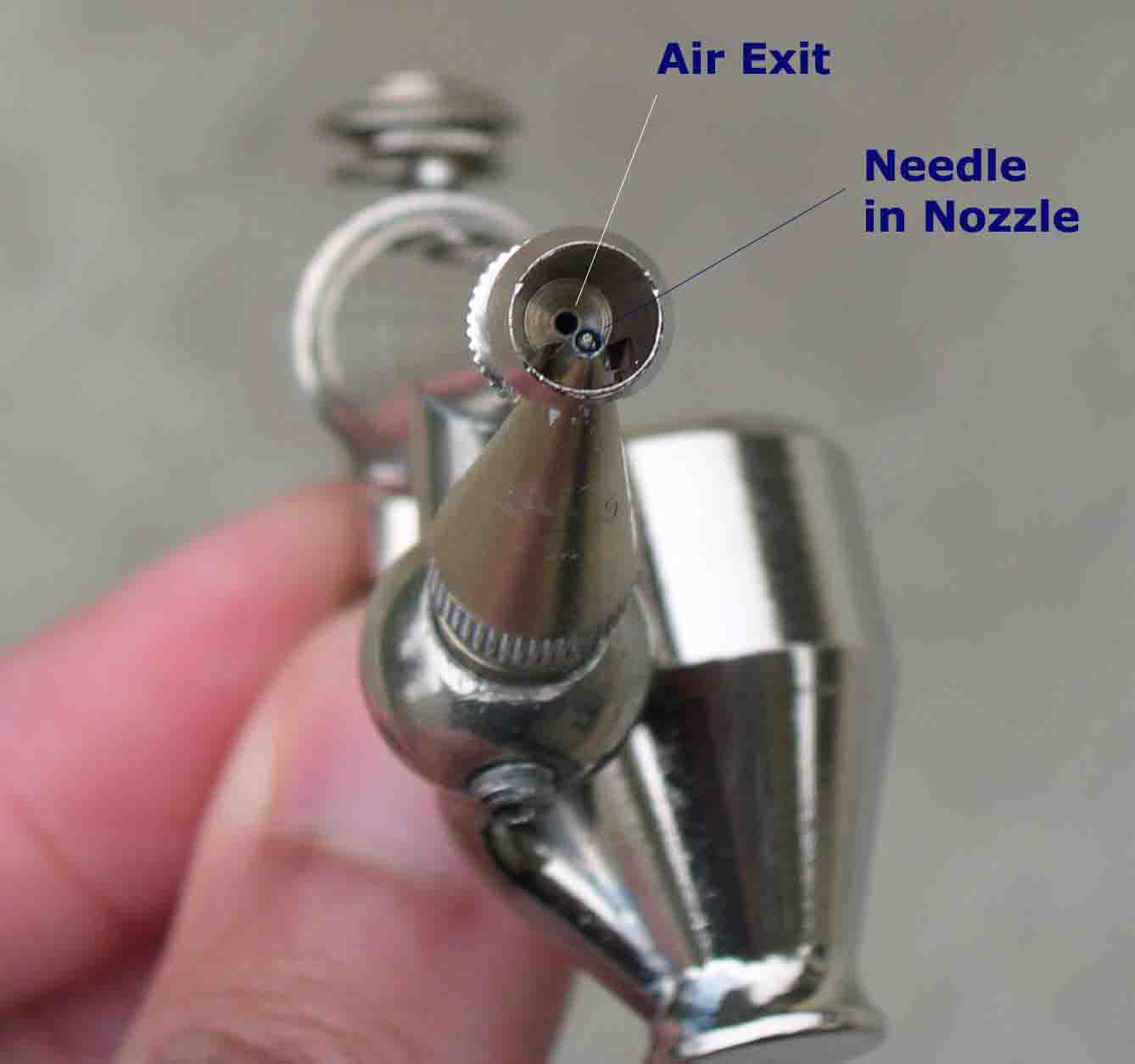
Business-end of the airbrush in previous picture
Single versus Double Action - In the single action airbrush, pressing on the trigger controls only the airflow. The amount of paint released is adjusted by turning the nozzle before the trigger is pressed. In the double action, the trigger can be moved down as well as back. The latter motion varies the amount of paint released, during the spray. This can be harder to learn to control, but allows the user enormous flexibility in the range of effects that can be achieved. Most professionals and advanced amateurs will use a double action airbrush.
Bottom versus Gravity Feed - In bottom feed airbrushes, the cup holding the paint is below the nozzle. The paint is sucked upwards by air pressure. In the gravity feed models, the cup is above the nozzle, so that gravity assists the paint in flowing out of the tip. The advantage to gravity feed is that lower pressures can be used for a given paint volume, which is great for fine line work. The disadvantage is that gravity feed models generally have the cup and brush body as one unit, not a plug-in as with the bottom feed; some people find the one unit slower to change colors and clean. There are also variations such as side feed and movable feed.
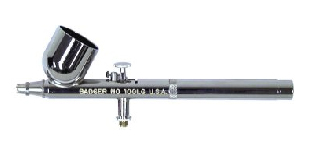
A double action, internal mix, gravity feed airbrush
Well, which should you get?
We've found that a basic single action, external mix is sufficient for most jobs: rc airplanes, plastic display models, craft projects, etc. It also tends to be more affordable than the double action internal mix models. We've used the Paasche Model H extensively and like it a lot. It's a simple, high-quality airbrush.
You can get these in a set with accessories and different needle sets. Here are a couple of models that we painted with a Paasche Model H:
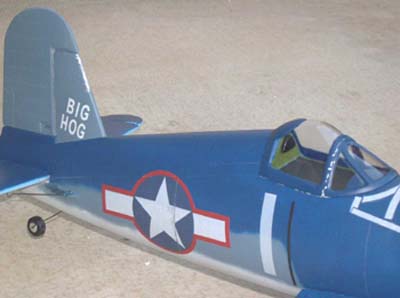
Above: The 3-colors on this rc airplane fuselage (white, medium blue, dark blue) were free-hand airbrushed with a Model H.
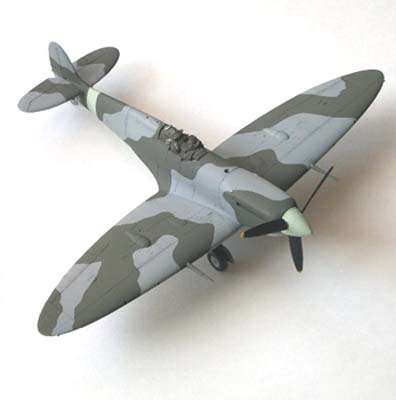
Above: Plastic display model of a Spitfire. The real airplane has sharp color separation lines, perfect for a Model H and some masking.
Badger, Iwata and Omni are also known for making solid, dependable airbrushes. For double action airbrushes, we like the Iwata Revolution CR (gravity feed). It's made from quality components, is well-balanced, very easy to clean, and gives excellent paint-job results.
Avoid super bargain or cheap "copy" models: the tolerances in an airbrush are small and parts will wear over time, so you need a good quality manufacturer; otherwise you might have a poor airbrushing experience. Also, make sure that you get a good air source.

